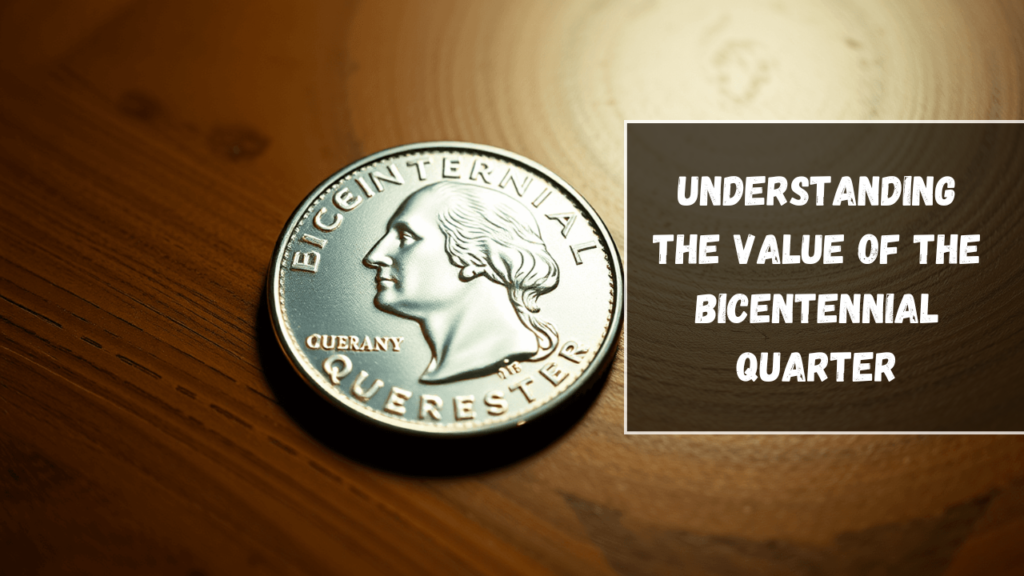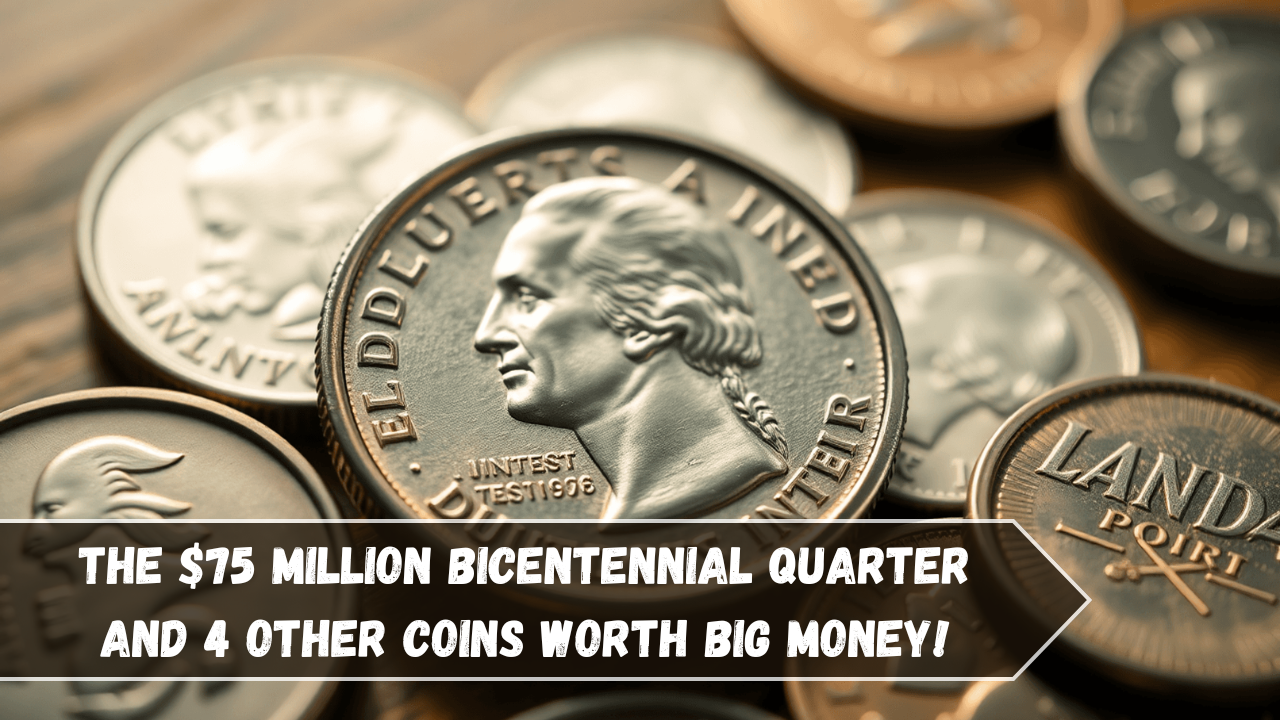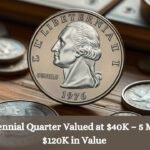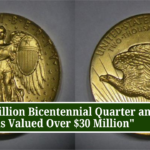Maybe there are hidden treasures sitting in the pocket change. The 1976 Bicentennial Quarter is one of those commemorative coins that marked America’s 200th birthday. Most of the quarters carry an almost negligible sum, but some specific variants attained astronomical value – particularly one pegged at a whopping $75 million.
These quarters are not just money; they are pieces of American history in your pocket. Of course, the costliest examples show unique and distinctive properties-special mint marks to striking errors that made these coins highly sought after by serious collectors.
Read on below to learn more about:
- The story behind the creation of the Bicentennial Quarter
- What makes some variants million-dollar issues
- What factors make one coin worth more than another
- Tips from the experts: How to spot that rare and valuable quarter in your collection
- More unusual coins that fetch big-time prices.
The History Behind the Bicentennial Quarter

The 1976 Bicentennial Quarter was a mintage intended to celebrate a magnificent occasion in American history-200 years from the country’s existence. This special coin came from a limited edition printed by the U.S. Mint along with half dollars and dollar coins.
How It All Started
In 1973, the U.S. Treasury Department of decided to hold a national design competition to generate a new design for the quarter. The winning design, by Jack L. Ahr would change the face of the traditional quarter’s back side completely.
The Winning Design
A colonial drummer boy in front of a victory torch, surrounded by the 13 stars representing the original colonies, was the depiction created by Ahr on his design. As such, it became an iconic picture of America’s history.
Key Features of the Coin
Some of the unique features that set Bicentennial Quarter apart from others are as follows:
- Two dates “1776-1976” on the obverse
- John Flanagan’s traditional portrait of George Washington on the reverse
- The legend is inscribed “UNITED STATES OF AMERICA”
- The denomination is mentioned as “QUARTER DOLLAR”
- Motto is “E PLURIBUS UNUM”
Production Details
The U.S. Mint has two types of Bicentennial Quarters:
- Copper-nickel clad quarters
- 40% Silver quarters for collectors only
- Production from July 1975 to 1976 at three mints
- Philadelphia mint No mint mark
- Denver mint D mint mark
- San Francisco mint S mint mark
Understanding The Value Of The Bicentennial Quarter

Although most circulating Bicentennial Quarters still count at face value, certain rare specimens of this coin have sold for millions in the collector’s market. The common 1976 quarter that you would find in your pocket sells for around $1 to $5, while other scarce specimens have been graded for millions of dollars.
Key Value Factors:
- Mint State (MS) Grade
- Production Errors
- Proof Status
- Silver Content
- Strike Quality
- Surface Preservation
The highest-valued Bicentennial Quarter stands at an astounding $75 million – a price driven by its unique characteristics and exceptional preservation state. This particular specimen represents the pinnacle of numismatic perfection, though such valuations remain theoretical until confirmed through actual sales.
Notable Examples Of Valuable Bicentennial Quarters
Record-Breaking Sales:
- 1976-S Silver Proof Quarter (PR69 Deep Cameo): Achieved price: $19,200, distinguished by mirror-like fields and pristine strike quality.
- 1976-D Bicentennial Quarter (MS68 Grade): Bid price: $6,500, specimen quality from Denver mint almost perfect.
- 1976-S Clad Proof Quarter (PR70 DC): PRICE: $6,000, frosted cameo contrast.
- 1976-D Doubled Die Error Quarter (MS66 Grade): Price: $8,400, with good doubling and high-grade preservation.
Error coins are quite valuable. Doubled dies, off-center strikes, and wrong planchet errors really make the value of a coin multiply. Professional grading services authenticate the variations; PCGS and NGC, when documented, are highly considered in valuations.
The collector market drives the prices, with serious collectors fighting hard for the best grades. Bicentennial Quarters that are pristine with special characteristics or pedigrees documented by auction houses are gaining higher interest.
Factors Influencing The Value Of Coins Beyond Just Mint Marks And Seignor age

The numismatic community identifies several key attributes that define the intrinsic value of a coin beyond simple identifiers. Other than mint marks and seignorage, which define a coin’s most fundamental facts, these elements influence its market price:
1. Historical Context
- Relates to historical events
- Cultural significance at the time of minting
- Reflects societal changes reflected in design changes
2. Physical Characteristics
- Preservation of the coin surface
- Striking quality
- Tone patterns
- Die state variations
3. Production Details
- Manufacturing defects
- Die types
- Special finishes
- Experimental pieces
4. Market Dynamics
- Current collector fad
- Regional demand drivers
- Investment value
- Authentication status
The value of a coin is often heavy with the story behind it. One such key example is the 1804 Silver Dollar, whose value lies more in the historical context than in the inherently low mintage. Similarly, coins that come with known ownership by prominent collectors or ones that have traversed history, along with their intrinsic values, carry premium prices in the market today.
Tips For Finding Valuable Coins In Circulation Or Collections Around You!

Ready to go on a hunt for valuable Bicentennial Quarters? The following action plan is designed to assist you in your search for these hidden treasures.
1. Start Close to Home
- Check your existing coin collection and family heirlooms
- Ask relatives if they have old coin collections gathering dust
- Search through spare change jars and piggy banks
2. Bank Roll Hunting Strategy
- Request quarter rolls from your local bank
- Look for coins with unusual coloring or striking errors
- Pay special attention to 1976-dated quarters
- Return searched rolls to the bank and get new ones
3. Key Features to Watch For
- Double die errors on the obverse side
- Silver proof variations (they have a distinctive shine)
- Deep cameo contrast on proof coins
- Mint marks: D (Denver), S (San Francisco)
4. Professional Authentication
- Contact Professional Coin Grading Service (PCGS) for high-priced discoveries
- You can also opt for NGC (Numismatic Guaranty Corporation)
- Grading fee: $20 to $75 per coin
- High-grade certifications could add huge value to the coins
5. Local Resources
- JOIN COIN CLUBS IN YOUR COUNTRY
- Attend shows and consult dealers to have the pieces assessed by an expert
- Develop associations with seasoned collectors
- Use coin collecting apps to identify potentially valuable pieces
Conclusion
“It’s not about the money,” young collector Thompson says, summarizing the hobby. “It’s history, art, technology-things one learns of America through these small pieces of metal.” As it turns out, the Bicentennial Quarter is a great example of what this pastime has in store.
Devoted collectors are interested in something much more than the price of each coin in the market. They tend to estimate value in historical background, artistic beauty, and technical work put into each coin. Furthermore, collecting brings personal ties and memories that cannot be estimated in dollars.
As you search and hunt for coins, every coin you find could teach you something new; whether it is a damaged or malformed coin or a rare mint mark, every one adds another chapter to your history of our nation’s story.
FAQs
What is the historical significance of the Bicentennial Quarter?
This was the Bicentennial Quarter, minted in 1976 to celebrate American Independence’s 200th anniversary. It contained the Lady Liberty on one side and George Washington on the opposite side with elements that represented the founding principles of the nation.
Why are some Bicentennial Quarters valued at almost $75 million?
This is because some extremely rare error coins or high-grade proof versions of Certain Bicentennial Quarters have commanded quite high prices at auctions due to their rarity, condition, and demand by collectors. Examples include 1976-S Silver Proof at $19,200.
What factors influence the value of a Bicentennial Quarter?
The value of a Bicentennial Quarter is influenced by several factors, which include its condition, the degree of rarity, historical importance, specific attributes such as mint marks and seignorage figures, among others, and the demand among collectors.








